This post may contain affiliate links. If you click through a link and make a purchase, I may receive a commission at no additional cost to you. As an Amazon Associate, I earn from qualifying purchases. Read the full disclosure here.
We’ve all been there. You’re going along fine, and then one morning, you wake up with excruciating neck pain.
You know — that deep ache from the back of your head down into your shoulder blade that makes it nearly impossible to turn your head — yeah, it’s going to be a good day.
Why does this happen? How are you sleeping wrong?!
Let’s take a closer look, plus what you can do to feel better fast.
*Friendly PSA – This post will discuss garden variety neck tightness from sleeping wrong that is not associated with other chronic cervical spine conditions. The information here is for educational purposes only and is not medical advice.*
Disclaimer: This content is for educational purposes and is not medical advice. Read the full disclaimer.
What exactly is a “crick” in the neck?
Not very scientific, but a crick in your neck is a casual way that people sometimes describe a muscle spasm, general achiness, or stiffness in the neck, especially after sleeping.
A crick in the neck is typically accompanied by pain, stiffness, and difficulty turning or moving the head from side to side.
What causes neck pain from sleeping wrong?
Sleeping should be easy, right? It turns out, there are several ways this relaxing activity can leave you feeling anything but rested.
Waking up with neck pain can be a result of your sleeping position, your pillow, how you move in your sleep, or pre-existing pain.
Let’s take a deeper look at these causes and find out you can decrease your chances of waking up with neck pain.
Your sleeping position
Sleeping posture is related to neck and shoulder pain as well as headaches. (Lee et al.) Sleeping position is also linked with the quality of sleep.
Studies have predicted there is a reciprocal relationship between poor sleep and pain. The less quality sleep you get, the harder it is for the body to heal. Round and round we go, deeper into this vicious cycle.
When sleeping, you spend anywhere from a few minutes to a few hours in the same position. An awkward position can cause muscle strain, leading to an unwelcome neck spasm in the morning.
How should I sleep with neck pain? The best sleep position is one that’s comfortable for you while maintaining good alignment of the spine. This can be accomplished in a variety of ways.
Stomach sleeping or some side sleeping positions are more likely to result in neck discomfort due to poor spinal alignment.
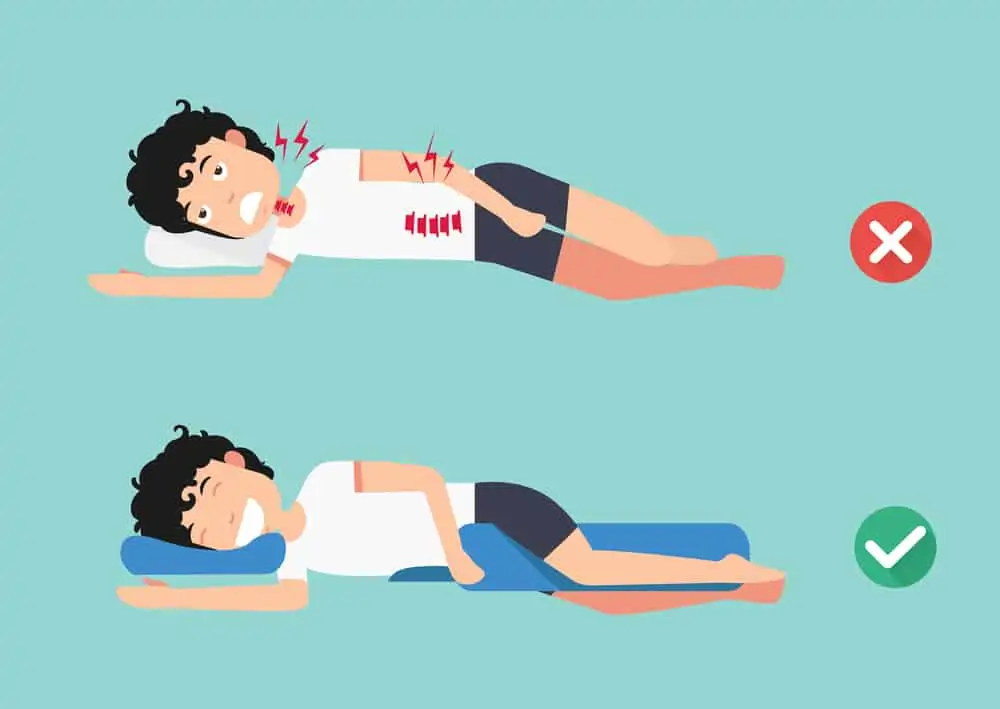
Can pillows affect neck pain?
If you notice chronic neck pain in the morning, you might be using the wrong pillow.
What’s the best pillow? That will take some trial and error. Pillows are a personal preference. So it’s more like what’s the best pillow for you.
Let’s take a closer look.
A supportive pillow optimizes spinal alignment and reduces the chances of waking up with neck pain. A pillow that is too flat or too elevated can cause pain. We’re looking for that “just right” zone.
Look for a pillow that suits your preferred sleeping position. For example, if you’re a side sleeper, you may need a bit more height to accommodate room for your shoulder and avoid your head from collapsing down. If you’re a back sleeper, too high of a pillow can pitch your head forward and cause neck strain.
Avoid propping your head higher than the rest of your body, which places the neck at an awkward angle and can contribute to neck pain and headaches.
If you need to have your head elevated, try a wedge instead to support the head, neck, and shoulders to maintain alignment.
Is it better for your neck to sleep without a pillow? It depends, what position do you sleep in? If you’re a back or side sleeper, probably not. If you’re a stomach sleeper, no pillow may help keep your spine aligned.
Good support does more than help avoid neck pain. Proper alignment can also help decrease snoring, improve breathing, and decrease episodes of sleep disruption, improving your overall sleep quality.
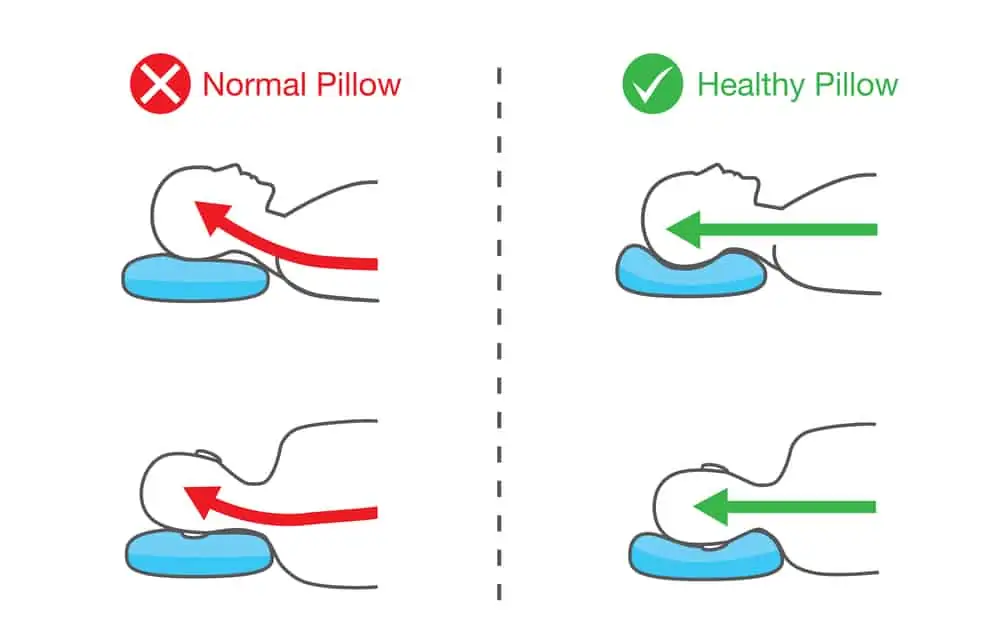
Her J et al. looked at head and spine position on various pillows during supine and side-lying. The study concluded that pillows with a uniform height are not suitable for supine or side-lying sleeping.
A contoured pillow (sometimes called a cervical pillow) can help support the spine’s natural curve. You can also place a cervical roll inside your existing pillowcase to add some neck support.
The material of your pillow also matters. Too squishy, and there won’t be enough support. A feather pillow, memory foam pillow, and fiber fill pillow will all provide different sensations of support.
This review by Yim J concluded that a firm pillow with a cool temperature provides an optimal environment for restful sleep.
Side sleepers may also find body pillows to be a comfortable option to support the neck and shoulder joint as well as the lumbar spine by having a spacer between the knees. These extra sleeping accessories can also be more comfortable for the low back, hips, and knees.
Sleeping on your stomach is one of the worst positions for the neck. If you’re a stomach sleeper, try no pillow or a very thin pillow.
Also, try not to make a habit of falling asleep on the couch. The support from your mattress can also affect spinal alignment and contribute to neck pain.
How you move in your sleep
Have you ever seen dogs “chasing cars” in their sleep? It turns out we do some of that too.
Sudden or jerky movements while sleeping can cause muscle spasms.
While you can’t necessarily control your adventures mid-sleep, you need to be aware that this is also a contributing factor. Some unconscious movement is normal, but if you’re very restless, you might want to talk with your doctor.
Pre-existing pain
Discomfort or chronic pain from a previous neck injury might feel magnified when you first wake up because you haven’t been moving to promote blood flow and circulation.
Muscle pain from poor posture can also feel worse in the morning. We’ve got enough pain from text neck, we don’t need more from sleeping.
Chronic bad posture can also make it difficult to find a comfortable position for sleep and as a result, you may end up continuing with poor alignment habits that worsen your pain.
Related read: How To Fix Tech Neck
Exercises for when your neck hurts after sleeping
When it comes to neck pain relief, there’s a lot of conflicting information circulating.
The natural tendency to help a muscle spasm is to try and stretch it or not move at all. When a muscle is in spasm, aggressive stretching is counterproductive. Try a gentle stretch and range of motion instead and avoid immobilization.
Muscles and joints need gentle movement and circulation. Avoiding movement typically leads to more pain and prolongs the time until feeling better.
Over-the-counter pain relievers aren’t your only hope. Here are some easy ways to ease neck stiffness and muscle tension from sleeping wrong.
*These exercises are for educational purposes only and may not be suitable for everyone, especially if you have other cervical spine issues past the garden variety stiff neck. This article is not meant to diagnose or treat any conditions.*
Shoulder rolls
When it feels too uncomfortable to move your neck, you can gently move other muscles with attachments to the head and neck — like the upper traps and levator scapulae.
Shoulder rolls are a gentle way to introduce some mobility to a cranky area.
How to perform:
- In a seated or standing position, upright your posture in a natural way
- Gently bring your shoulders forward, up, back, and down as if you were following the outline of a clock.
- Try to keep your head aligned over your spine and avoid jutting the chin forward as you move your shoulders.
- You can experiment with clockwise and counterclockwise directions.
- Don’t forget to keep breathing.
- Perform 10-20 repetitions as needed throughout the day.
Thoracic spine mobilization
The upper thoracic spine (upper back) and neck work together. Gentle mobilization of the thoracic spine can help other areas like shoulder stiffness or neck soreness.
Gentle thoracic extension
Maintaining thoracic extension is essential for healthy cervical spine and shoulder motion.
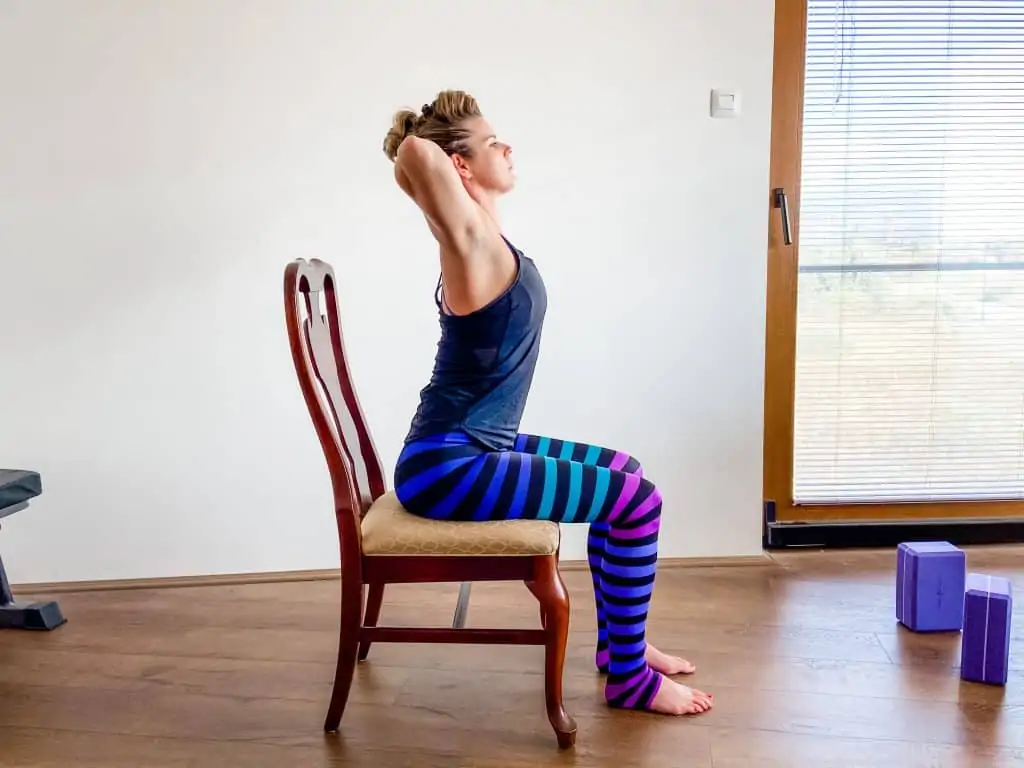
How to perform:
- Sit tall and interlace your fingers behind your head and neck
- Cradling your head, gently extend your upper back only
- Return to a neutral spine position
- Repeat 5-10 times
Gentle thoracic rotation
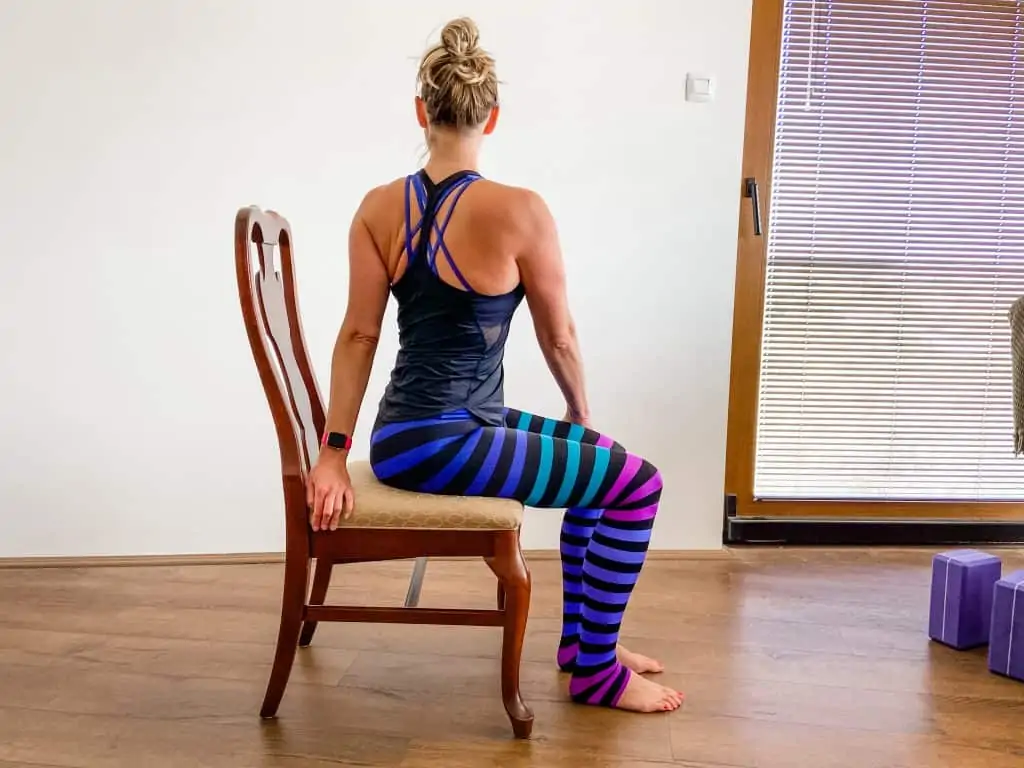
How to perform:
- Sit tall and rotate to the right using your arms like a kickstand to help you turn your spine.
- Allow the head and neck to follow, but don’t actively rotate the neck, just let it follow.
- Release and turn to the left side. There should be minimal to no neck discomfort.
- Rotate 5-10 times in each direction.
Gentle cervical spine range of motion
The frustrating part of waking up with neck pain is the moving hurts, but some motion is necessary to start feeling better. Gentle range of motion (in a pain-free range) can start to loosen up stiff and painful muscles.
Forcing range of motion that causes pain is counterproductive. It’s important to acknowledge this, even if it may feel like you can only move a small amount.
Motions like:
- Gentle nods up and down
- Gentle nods side to side
- Gentle tilting side to side
Over the next few days, you should start to see an improvement in how far you can move pain-free.
Self-mobilization with a towel
This has become one of my favorite go-to moves for neck stiffness and has helped me relieve pain in a pinch!
Unless you have a job where looking up is common, most people are just constantly looking down at phones. Flattening the cervical spine curve can lead to nerve compression over time.
This exercise uses a towel to gently mobilize the neck joints, as is great for maintaining healthy range of motion.
This motion is not for everyone. Always check with your doctor or physical therapist.
- Place the towel around the back of your neck and hold with both hands.
- Using the towel to cradle you neck gently extend your neck as you look toward the ceiling in a symptom-free range
- Tuck you chin and roll back up to neutral
- Repeat 5-10 times
Light exercise
Other generalized light exercises like walking or yoga can help warm up tissues and improve circulation.
When it comes to neck stiffness, not moving is one of the worst things you can do! Here’s a gentle yoga practice from my YouTube channel to relieve neck and upper back stiffness.
Apply ice or heat for comfort
For severe pain or muscle spasm, ice can help take the edge off and reduce your pain.
Topical gels, such as Biofreeze, may help you get through the day with intermittent application. Stash the roll-on version in your bag when your neck starts to feel sticky later in the day.
For general soreness and stiffness, using a heating pad or taking a hot shower can help decrease feelings of stiffness so you can get moving.
Don’t miss Ice vs. Heat For Pain for more details on how to properly use these modalities and what to expect.
Tips for travel to avoid neck pain
Whether it’s planes, trains, or automobiles, sometimes catching some sleep on the go is a necessity. Don’t get to your destination in pain!
Invest in the right tools to minimize neck pain from sleeping on the go.
I recently got the TRTL neck pillow after I was stuck on an overnight flight with no space to recline. Spoiler alert – it was miserable. The traditional blow-up U-shaped pillow was pitching my head forward, making it impossible to get comfortable.
You can also try this moldable travel pillow with a flat back that doesn’t push your head forward and you can mold it into different shapes to suit your sleep style. It might also be useful if you like to doze off on the couch!
Related read: 12 In-Flight Stretches For Long Plane Rides
Other helpful tools to manage neck pain
Gentle active movement is necessary to relieve this kind of neck pain; however, some of these more passive tools may help bring temporary relief to help you get through the day.
Ice packs
Ice is a convenient option to help with muscle spasms and pain management and can help temporarily take off the edge. These ice packs are not the teeny-tiny overpriced drug store kind. The awesome physical therapy office kind!
My two favorite brands are Torex Mojility and ColPac, and they’re both available on Amazon.
These large ice packs come in a variety of large sizes to cover anything you need. The cervical spine size is excellent for the neck, shoulder, knee, or ankle!
Not sure when to use ice vs. heat? Read this article.
Heating pad
The ice-heat debate for muscle stiffness is real. In some cases, it comes down to personal preference. A hot shower might feel relieving. Direct heat to the neck sometimes results in headaches. It depends on what works for you.
Many heating pads are microwave-ready to get heated relief in just a few minutes – like this hot pack with lavender aroma.
Pro tip: Too hot or too cold is never a good thing for your skin. Make sure you take the appropriate precautions and place extra towels between your skin and the hot/cold pack.
Biofreeze
No time to sit around with heat or ice on your neck? No problem.
Biofreeze is a pain-relieving gel (it comes in a gel, roll-on, and spray) that provides a cooling menthol sensation to decrease pain.
Biofreeze does not contain medication and can be a helpful adjunct to manage pain as you go about your day. It helps take the edge off.
Pro tip: this stuff is strong. Always make sure to wash your hands thoroughly after applying to avoid getting menthol in your eyes (or anywhere else). If applying the gel, you can also use a disposable glove to minimize any residue left after washing your hands.
(I think the roll-on style is the least messy of the three.)
Massage gun
Massage guns are gaining popularity in the fitness world as people look for easy ways to help manage muscle pain at home.
For neck and shoulder pain, it’s best if you can recruit someone in your household to hold the massage gun for you so you can fully relax your muscles.
Massage guns run the gamut in terms of price, bells, and whistles, and how “cool” they look, but there’s something for everyone.
I picked up a Hydragun last Christmas and this is one Theragun rival you don’t want to miss!
Get $10 off Hydragun purchases of $135 or more via this link and use code EMPOWERYOURWELLNESS.
How long does a neck strain last?
Waking up with a neck problem is — well — a real pain in the neck. But that’s all it is.
Under normal circumstances, a stiff neck from sleeping wrong should gradually improve with gentle movement in a few days to 1-2 weeks.
If you feel like your symptoms are not improving, check in with your doctor or physical therapist.
Seek help if you notice your pain is accompanied by more concerning symptoms such as:
- Severe neck pain and are unable to move
- Dizziness, double vision, or other unusual visual disturbances
- Fever
- Severe headaches
- Numbness, tingling, or weakness can be a sign of a pinched nerve (cervical radiculopathy)
- Anything out of the ordinary or concerning for you
Wrapping up
Neck pain from sleeping wrong is a real pain in the neck! Luckily, there are plenty of ways you can minimize waking up with these uncomfortable symptoms.
Your sleeping environment should be as comfortable as you can make it to help you get the best quality rest possible.
The best sleeping position is one that’s comfortable for you while maintaining good alignment of the spine.
Of course, even with the best sleeping habits, there will still be times when you wake up with the occasional sore neck. Now you know some ways to deal with it to get better faster.
You might also like:
- Shoulder Impingement Pain – Tips & Tools to Get Better Fast
- 7 Foam Roller Exercises After A Long Day At The Office
- Pro Tips For Text Neck Pain
- Improve Your Posture by Focusing on These 3 Simple Things
References
Lee WH, Ko MS. Effect of sleep posture on neck muscle activity. J Phys Ther Sci. 2017;29(6):1021-1024. doi:10.1589/jpts.29.1021
Liu SF, Lee YL, Liang JC. Shape design of an optimal comfortable pillow based on the analytic hierarchy process method. J Chiropr Med. 2011;10(4):229-239. doi:10.1016/j.jcm.2011.04.002
Her JG, Ko DH, Woo JH, Choi YE. Development and comparative evaluation of new shapes of pillows. J Phys Ther Sci. 2014;26(3):377-380. doi:10.1589/jpts.26.377
Yim, Jongeun. (2015). Optimal Pillow Conditions for High-Quality Sleep: A Theoretical Review. Indian Journal of Science and Technology. 8. 135. 10.17485/ijst/2015/v8iS5/62330.

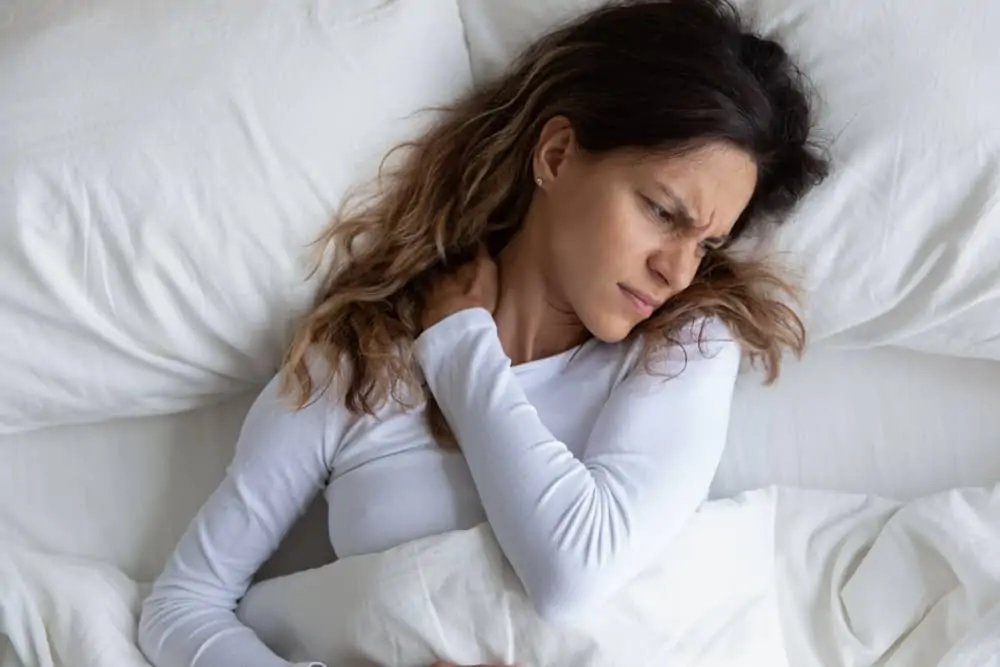
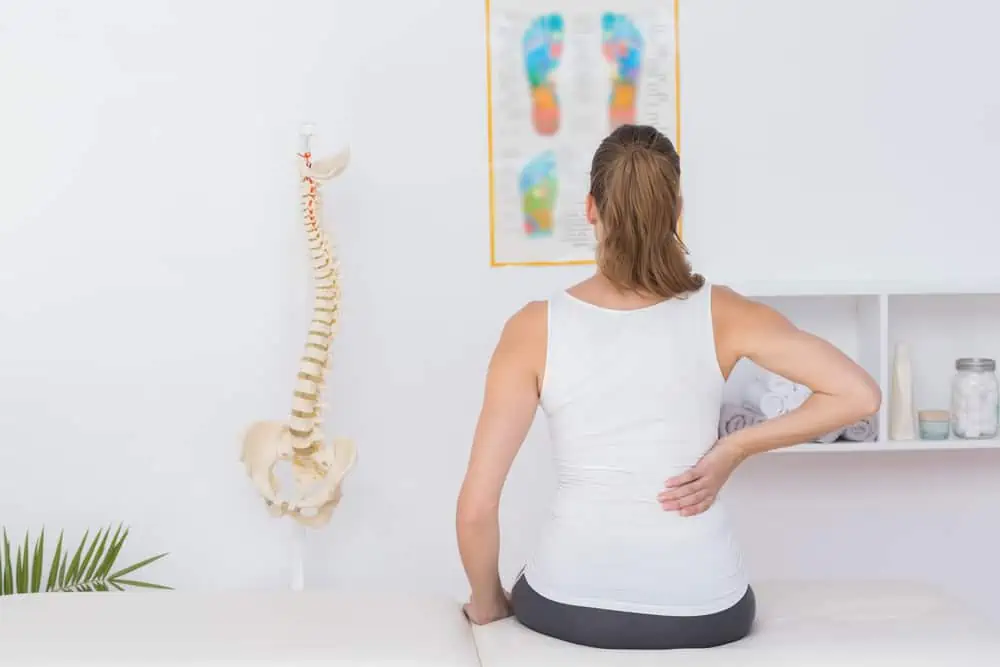
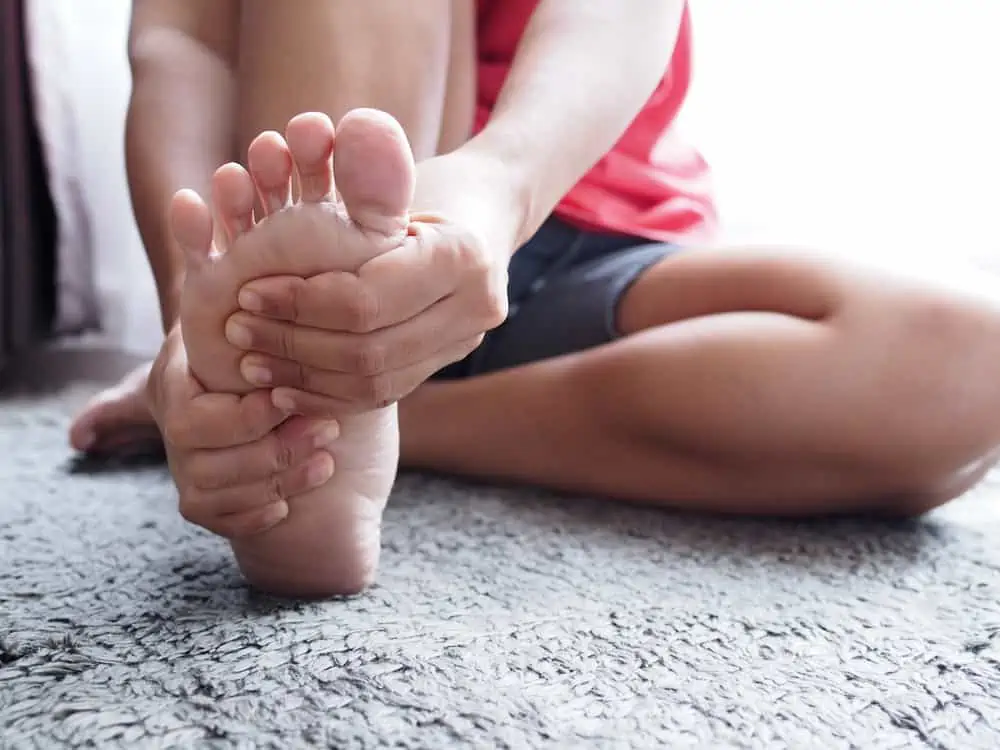
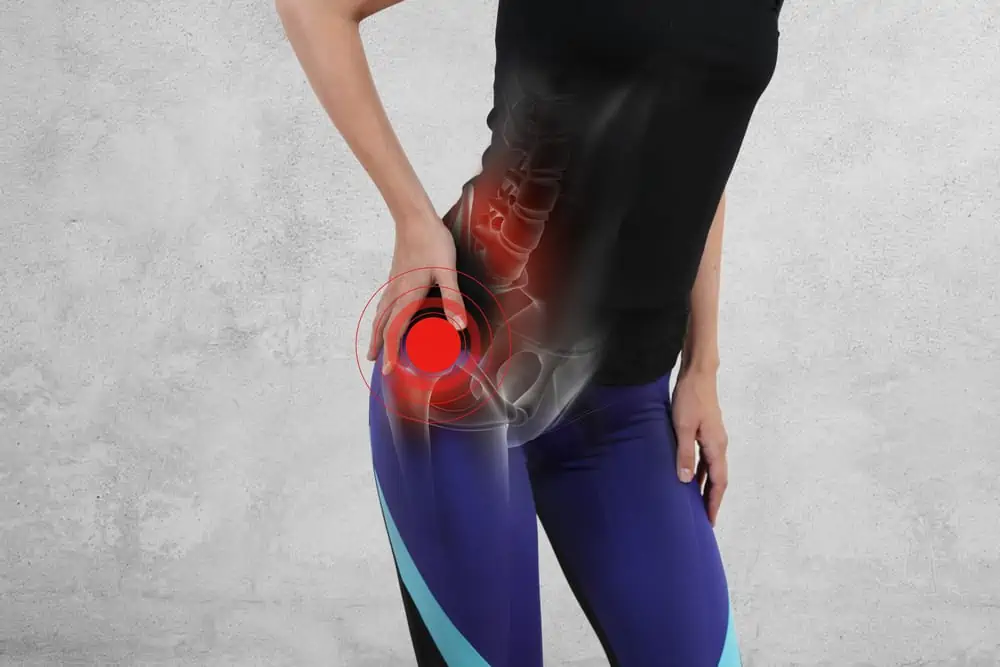



Wow, I didn’t realize you could do so much to help alleviate neck pain from sleep. Definitely trying out one of those contoured pillow, they look so comfy!
Yes, there’s a lot you can do to help avoid sitting around in pain! Thanks for reading, hope this was helpful.
I currently have two pillows for my neck I was in a car accident a couple of years ago and have neck pain sometimes at night. The two pillows really help with my neck pain.
sorry to hear that you’ve had an injury. It all depends on what’s comfortable for you and helps you wake up feeling refreshed. Sometimes different tweaks are needed when there’s a previous traumatic injury. Thank you for sharing!
Your article contains really useful information! My husband complains about neck pain from sleeping quite often.
Thank you for reading, glad it was helpful!